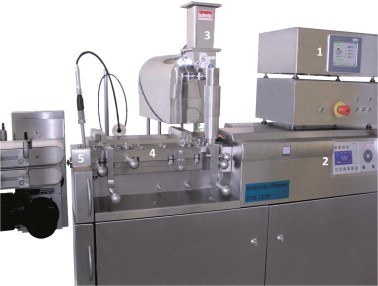Hot-melt Extrusion
Hot-melt extrusion (HME) is a continuous process of converting raw materials into a product of uniform shape and density by forcing it through a die under controlled conditions (i.e. temperature, screw speed, die pressure and feed rate). After extrusion, extrudates should be processed into the desired dosage form (e.g. mini-matrices, granules, tablets, films, intravaginal rings, pellets and porous matrices). A wide variety of downstream processing techniques are available. The selection of an appropriate downstream process is often based on the intended application, geometry of the final dosage form, production cost and material’s behaviour.
In the Laboratory of Pharmaceutical Technology, hot melt extrusion is used for designing sustained release dosage forms using conventional and non-conventional polymeric materials for controlled drug release. Recently, thermoplastic polyurethanes (TPUs) were identified as promising matrix excipients for the development of high drug loaded sustained release tablets via hot-melt extrusion and injection molding (HME/IM), thereby diminishing the amount of excipient needed and creating a major advantage for patient’s compliance. On the other hand, the extrusion process is used to enhance the bioavailability of poorly soluble drugs by preparing molecular dispersions for immediate release dosage forms.
The development of personalized 3D dosage forms with versatile release profiles is also one of our research interests. Recently, FDM 3D printing was used as an alternative HME downstream processing technique to produce personalised medicines for the manufacturing of high drug loaded (up to 60%, w/w) dosage forms where TPU-based FDM feedstock material offers a lot of formulation freedom for the on-demand production of personalized dosage forms at the point-of-care.
See movie
